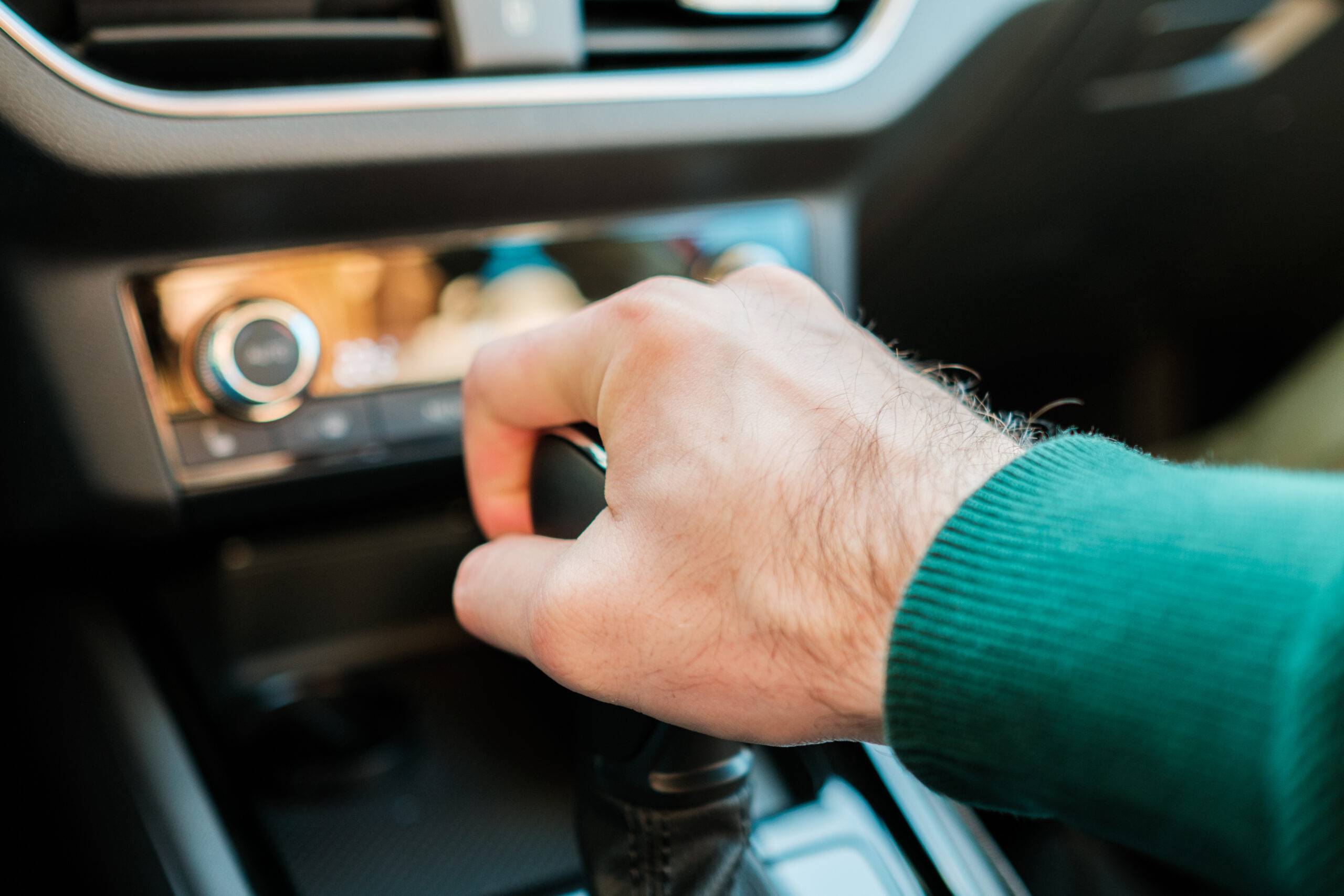In a manual car, the driver changes gears manually using a clutch pedal and a gear stick. You have to press the clutch, shift the gear stick to the right position, and then release the clutch to match the speed of the car with the correct gear.
1. More Control Over Your Car: A manual car gives you complete control over the vehicle’s performance. You decide when to change gears, which can be particularly useful when driving on Norfolk’s winding country roads or in challenging conditions like snow and ice.
2. Better Fuel Economy: Manual cars are generally more fuel-efficient than automatics. By changing gears yourself, you can keep the engine running at its most efficient speed, which can help you save on petrol in the long run.
3. Improved Driving Skills: Learning to drive a manual car requires good coordination and makes you more aware of what’s happening on the road. This can help you become a more attentive and skilled driver, as you’re constantly engaged in the act of driving.
4. Greater Flexibility: If you pass your driving test in a manual car, you’re licensed to drive both manual and automatic cars. This can be a big advantage if you ever need to borrow a car or hire one while traveling, especially in places like Norwich or other parts of Norfolk where manual cars are still common.
5. Potential Cost Savings: Manual cars are often cheaper to buy and maintain than automatics. They tend to have simpler mechanics, meaning fewer parts that could go wrong and lower repair costs.
Black Box Insurance policies, below we look at why this may help you initially to save costs initially until you start to gain a No-Claims Bonus.
1. Trickier to Learn: Learning to drive a manual car can be a bit of a challenge, especially if you’re new to driving. Getting the hang of the clutch, coordinating your hands and feet, and changing gears smoothly takes practice and patience.
2. Tiring in Heavy Traffic: Driving a manual car can be hard work in heavy traffic, particularly if you’re on the A47 or navigating through busy market towns like Norwich. Constantly pressing the clutch and changing gears can be tiring, especially on a long journey.
3. Less Convenient for City Driving: If you spend most of your time driving in towns or cities like Norwich, a manual car might not be the best fit. All the gear changing can be a bit overwhelming when you’re stopping and starting every few minutes.
4. Not as Common in Some Areas: In some parts of the UK, especially in larger cities, manual cars are becoming less common. This could make it harder to find a manual car to buy or hire if you ever need one.
Learning to drive can be a daunting process and not all of Norfolk’s roads are easy to navigate for new drivers. Within Norwich, there are new road layouts to contend with and this can make learning to drive in the city tricky at times. Here at The Best Intensive, we look at the pros and cons of learning to drive in both automatic and manual cars.
1. Easier to Learn: There’s no two ways about it, learning to drive an automatic car is usually quicker and simpler. Without having to worry about gears or a clutch, you can focus on other important skills like steering, braking, and keeping an eye out for other road users.
2. More Comfortable and Convenient: Due to the reduced stress levels, learning to drive an automatic car can offer a more relaxed driving experience, particularly in heavy traffic or when driving around town. There’s less effort involved, which can make longer drives or busy commutes less tiring.
3. Safer for Nervous Learners: If you’re feeling a bit nervous about learning to drive, an automatic might be a good choice. There’s no risk of stalling or rolling back on a hill, which can help boost your confidence early on.
4. More Popular and Widely Available: Automatics are becoming more common in the UK, and car manufacturers are producing more automatic models than ever before. This means you’ll have plenty of options when it comes to buying or hiring a car in the future.
5. Advanced Technology Features: Much like our own cars here at The Best Intensive, many modern automatic cars come with high-tech safety features like adaptive cruise control, automatic braking, and lane-keeping assistance. These can make driving safer and more enjoyable.
1. Restricted to Automatic Cars Only: If you pass your test in an automatic car, your licence will only allow you to drive automatics. This could be a drawback if you ever find yourself needing to drive a manual car. Therefore, it may be a good idea to learn to drive a manual, so you always have the option of manual or automatic, if preference or circumstances change.
2. Higher Costs: Automatic cars are generally more expensive to buy and maintain. The technology involved in automatic gearboxes can make repairs pricier if anything goes wrong.
3. Potentially Less Fuel Efficient: Although modern automatic cars have become more fuel-efficient, they’re often still less efficient than manuals. This could mean higher fuel bills, particularly if you’re covering a lot of miles.
4. Less Engaging Driving Experience: For some people, driving an automatic can feel a bit dull. You don’t get the same hands-on experience as you do with a manual, which can make driving feel less involving. It depends on individual attention-span and how you deal with your surroundings.
5. Reliance on Technology: Automatic cars rely heavily on technology, and while this can be a plus, it also means there’s more that could potentially go wrong. If the car’s computer or electronics fail, you could be facing a hefty repair bill.
Choosing between a manual and automatic intensive driving course depends on several factors, including your personal preferences, lifestyle, and long-term plans. Here are some key points to think about:
1. Where You’ll Be Driving Most Often: Think about the kind of driving you’ll be doing. If you’re mainly driving around the countryside or through the narrow lanes of Norfolk, a manual car might be more enjoyable, giving you more control on those winding roads. However, if you’re mostly driving in towns or cities like Norwich, an automatic could make life easier.
2. Your Learning Style: If you’re looking for a straightforward learning process, an automatic course might be best. But if you’re up for a challenge and keen to understand the nuts and bolts of driving, a manual course could be more rewarding.
3. Your Future Driving Plans: Think about where you’ll be driving in the future. If you’re considering travel as part of a job opportunity, learning to drive a manual might be more practical, as many company cars are often only available with manual gearboxes. However, if you plan to drive mainly on holiday, an automatic would provide a more comfortable and relaxed journey.
4. Your Budget: Think about your budget, not just for the driving course, but for buying and maintaining a car afterwards. Manual cars tend to be cheaper, but automatic cars are often more comfortable and easier to drive.
5. Your Confidence Level: If you’re feeling nervous about learning to drive, an automatic might help you gain confidence more quickly. However, if you’re confident and eager to master all aspects of driving, a manual course might be more your speed.
6. What You Want from Driving: Finally, think about what you want from your driving experience. If you see driving as a practical skill and prefer convenience, an automatic might be the way to go. But if you enjoy driving and want to feel more connected to your car, a manual course could be more satisfying.
Choosing between a manual and automatic intensive driving course is a personal decision that depends on your lifestyle, preferences, and future plans. Both options have their benefits and drawbacks, so it’s important to weigh them carefully.
If you value control, flexibility, and cost savings, a manual course might be the right choice. But if you prefer ease, comfort, and a straightforward learning process, an automatic course could be a better fit.
Whatever you decide, remember that learning to drive is a valuable skill that opens up a world of freedom and independence. Take your time, consider what matters most to you, and choose the course that best meets your needs. If you’re unsure, you can always give us a call and we can offer one-to-one advice.
At The Best Intensive, we’ve got both manual and automatic cars for you to learn in, with our five-day intensive driving courses. If you’re 17 or nearly there, and you’ve got your provisional license, have a look at the link below to find out more about our courses. We’re currently running courses in Norwich and Bristol, with plenty of pick-up spots to help you get a pass on your driving test. We’ve also got male and female instructors, so whichever you’re more comfortable with, we’re here to help you learn the way that suits you best. Safe driving, and see you on the road in Norwich or Bristol!



